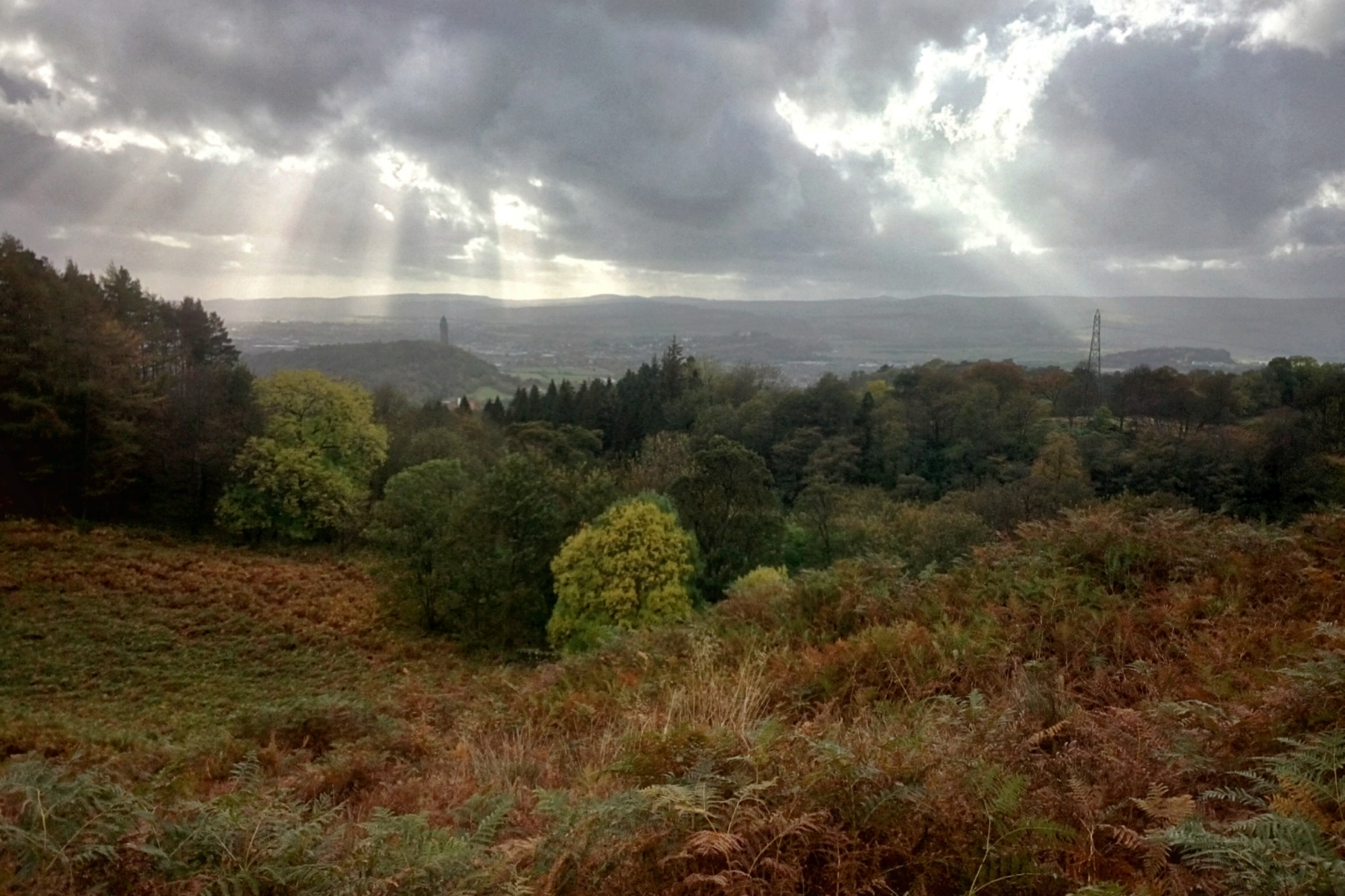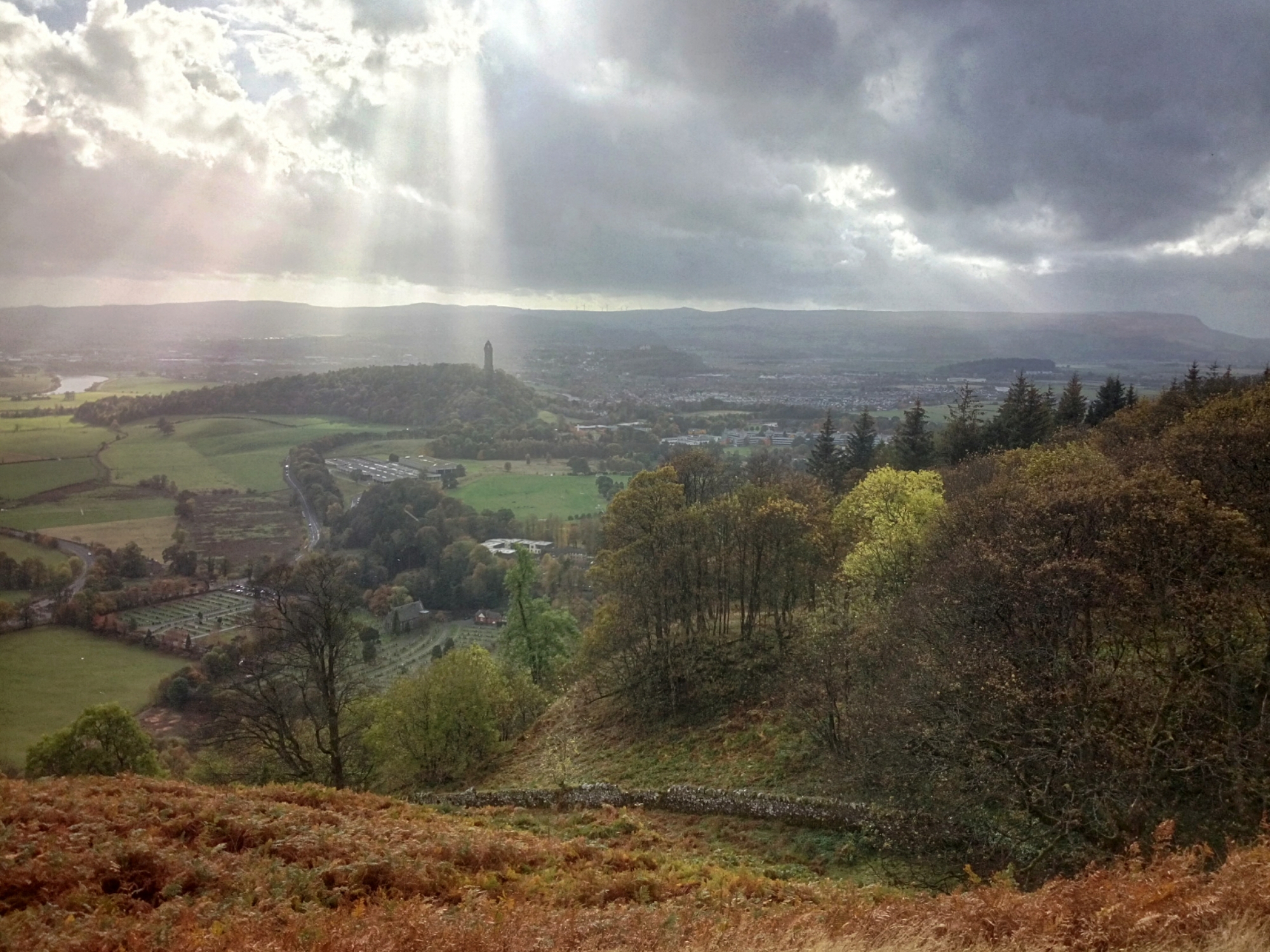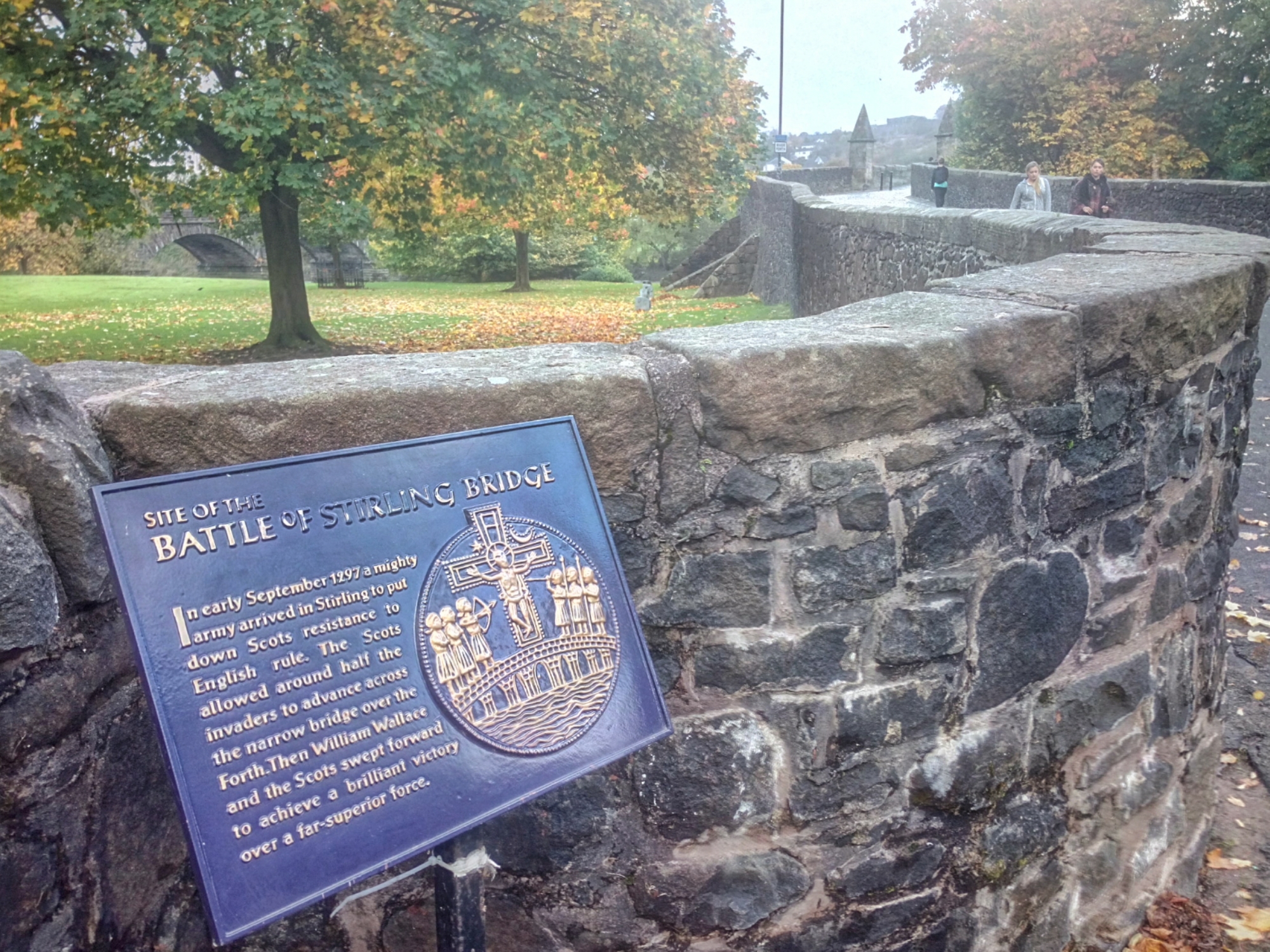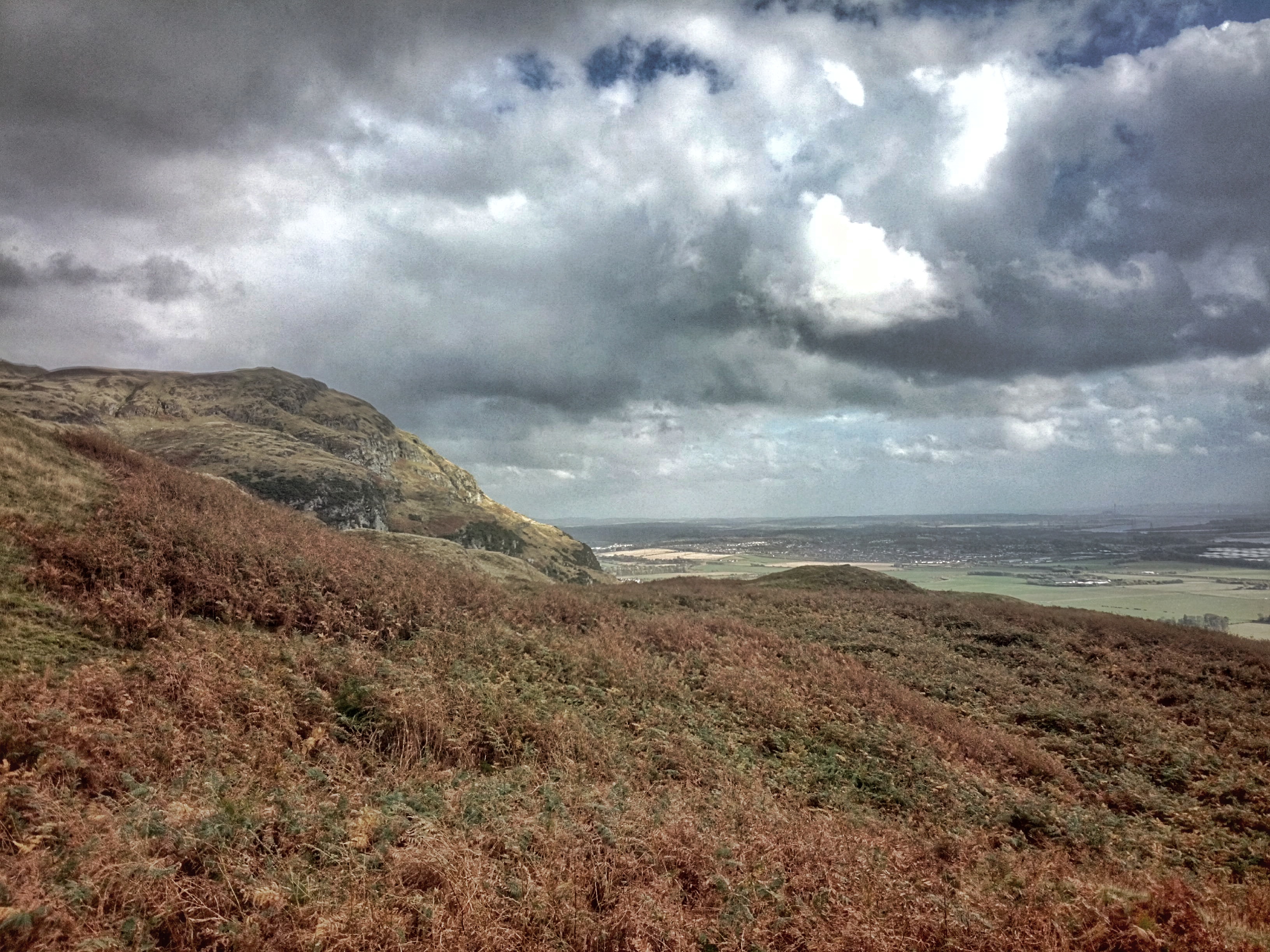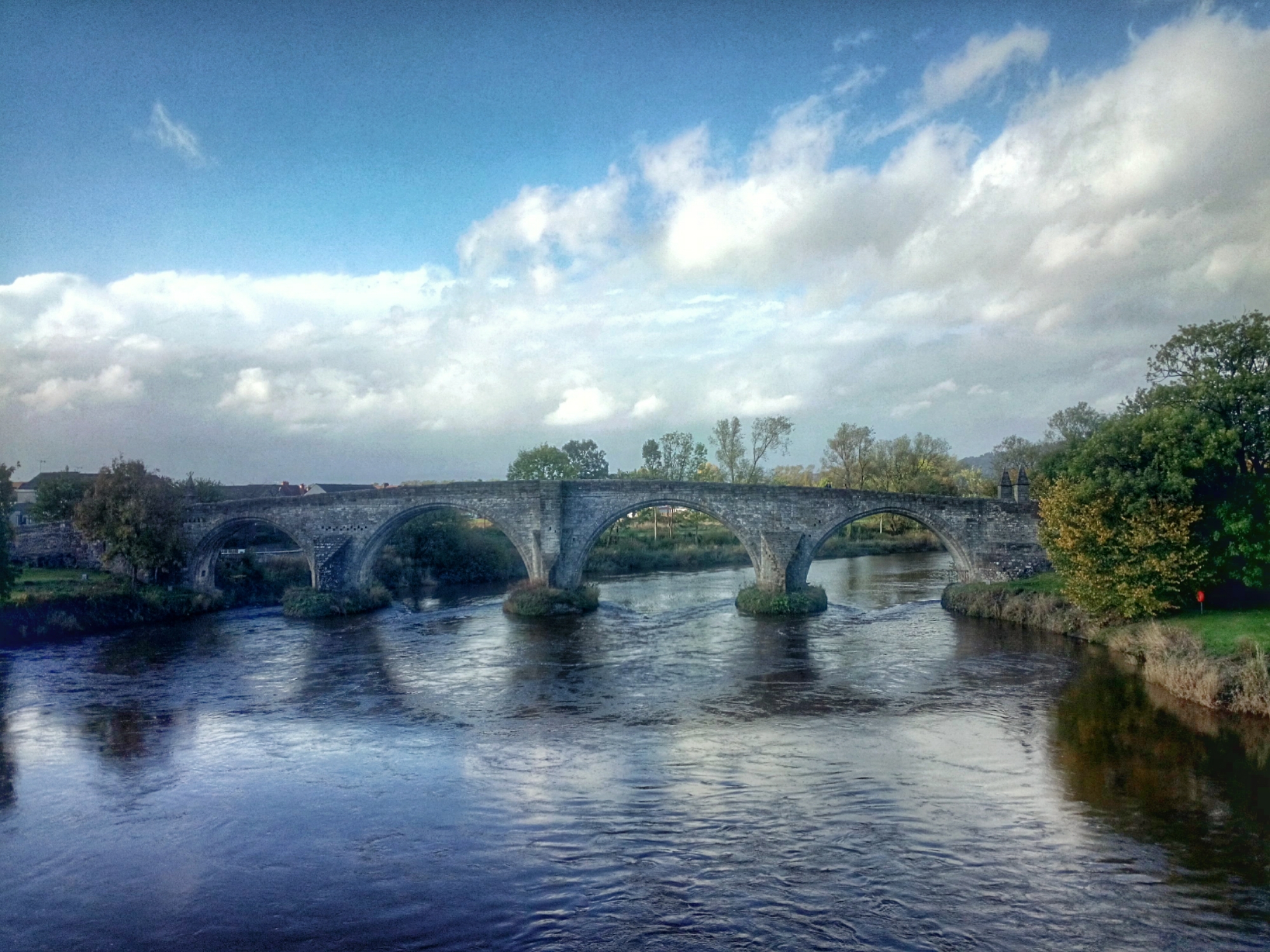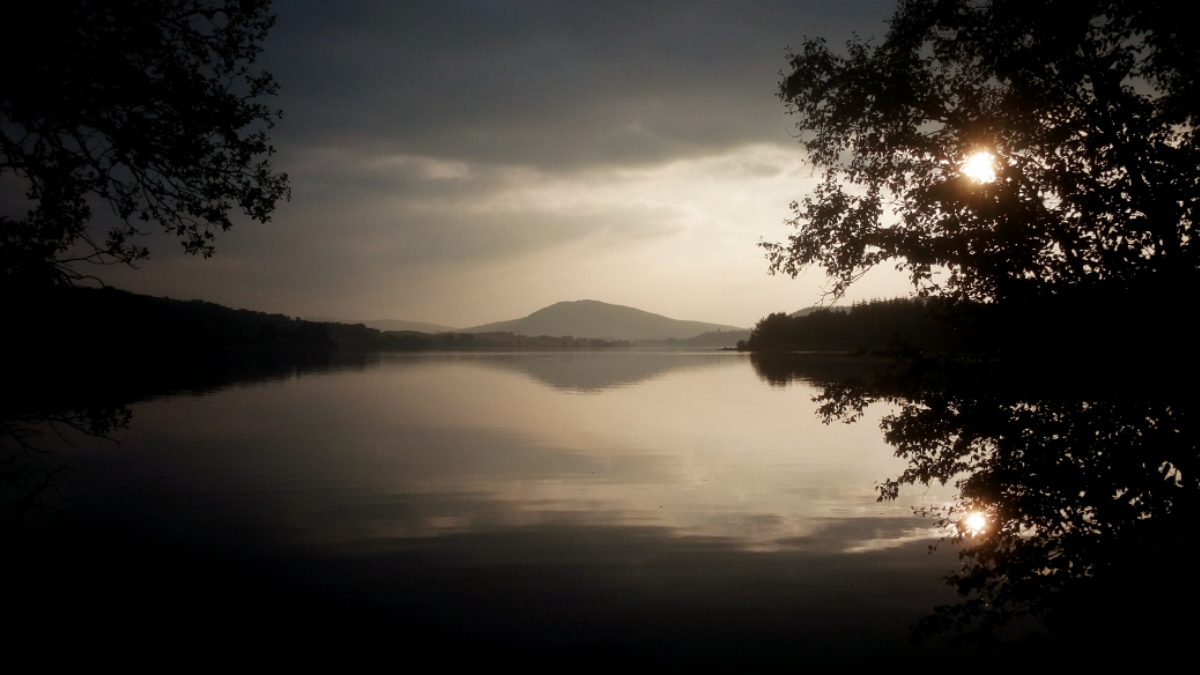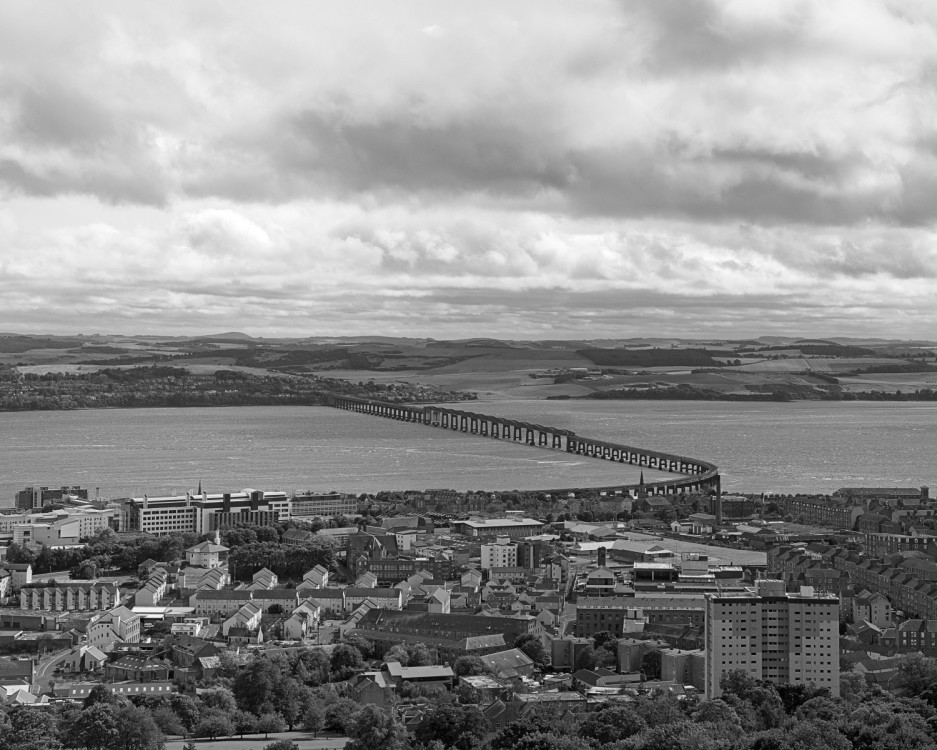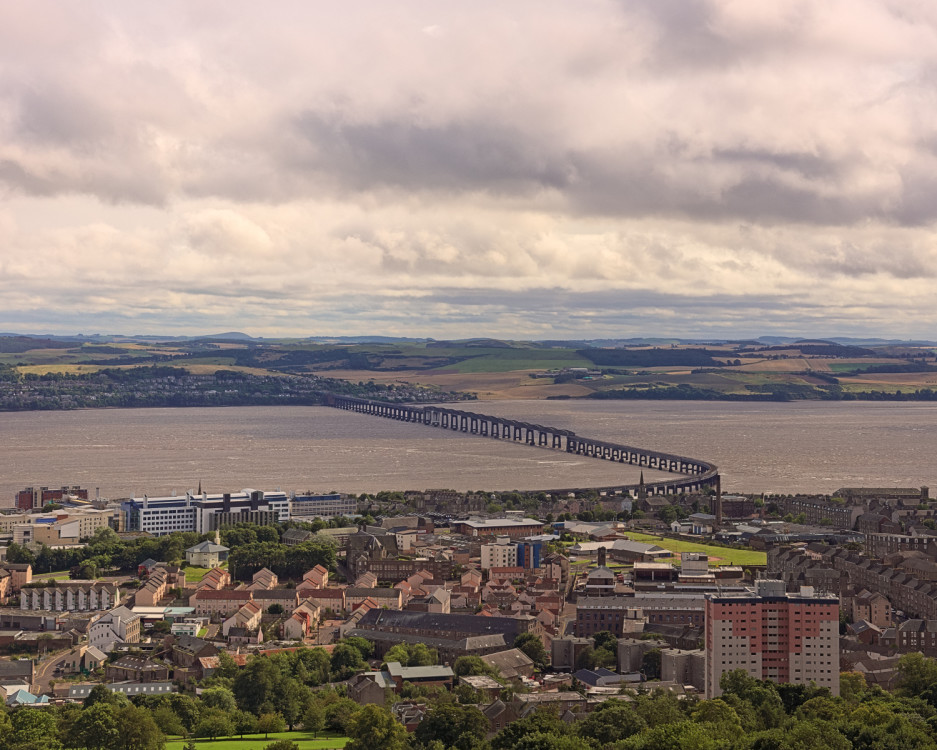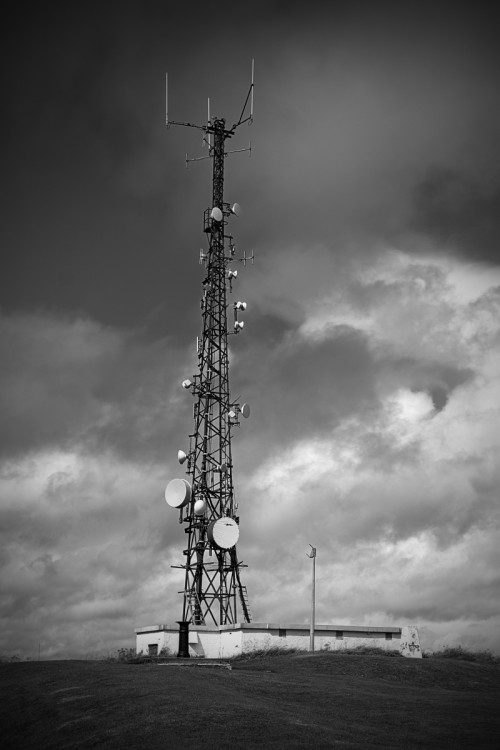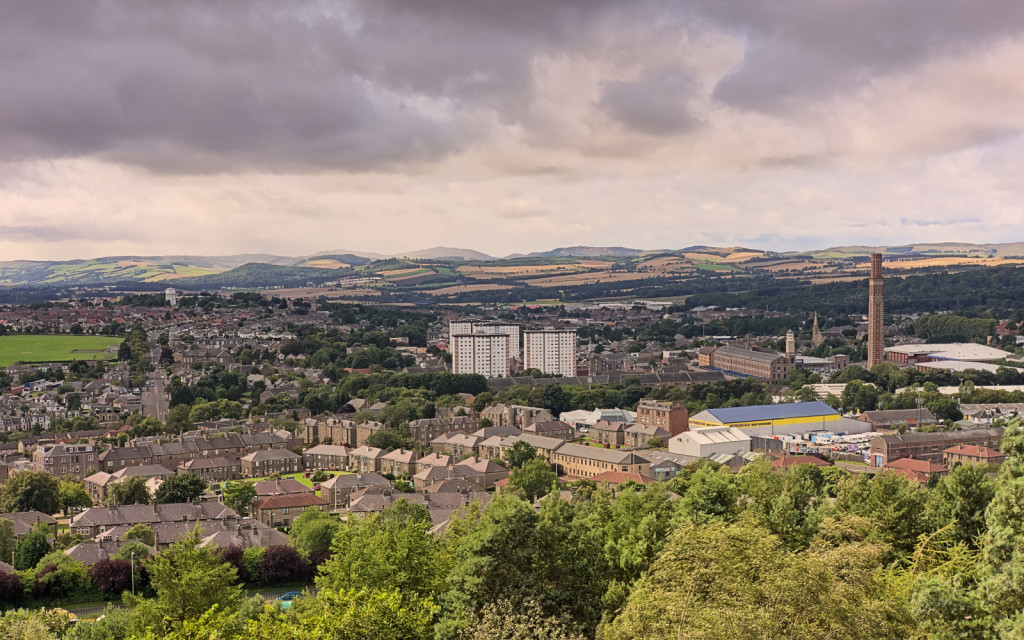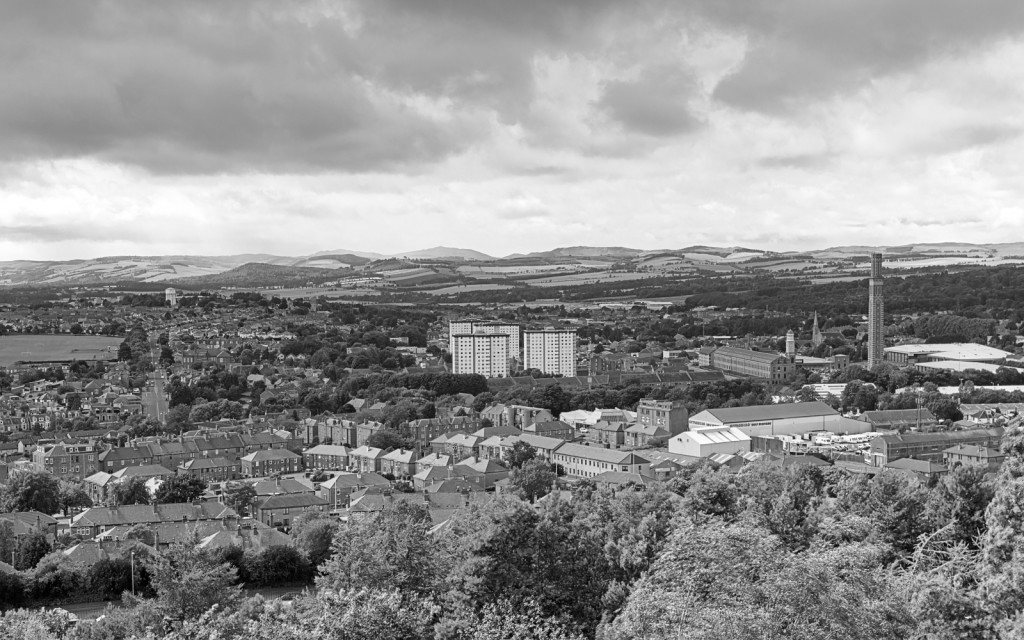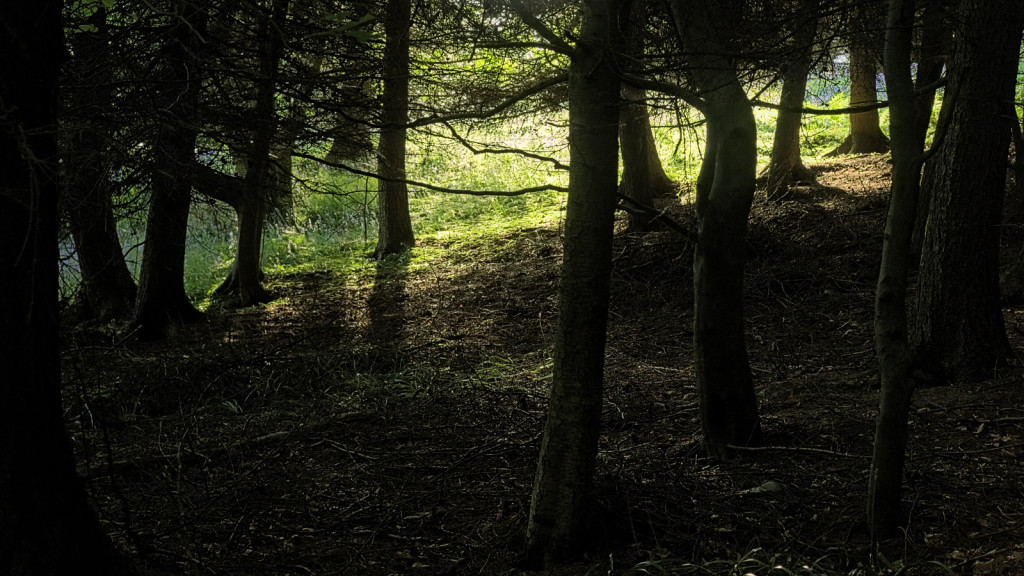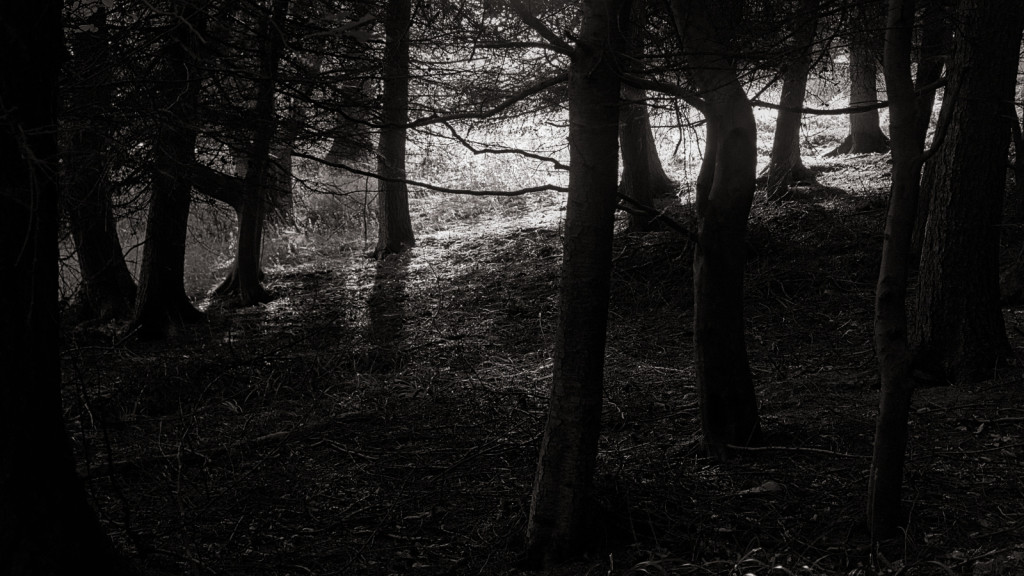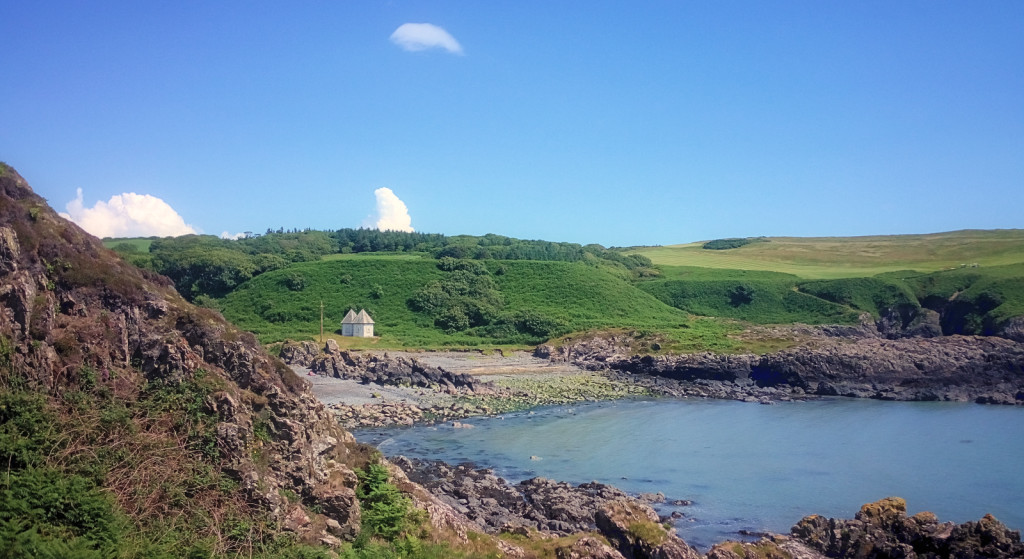Category Archives: Landscape
Light, Land and Heather… and ferns
I was quite pleased to notice that one of my favourite afternoon quick-escape locations is technically just north of the Highland Boundary Fault.
As I drove off the road, a flock of over 20 grouse shot out from the undergrowth and sprinted for dear life in front of me up to the carpark. Walking through the trees, I disturbed a deer grazing on the heather. Sometimes, you just can’t beat a few hours in golden sunlight, staring at mountains, for relaxation.
Forth Railway Bridge
A friend of mine has regularly suggested that someone seems to dot road-signs saying “Take Photo Here” around the landscape. The view of the Forth Road Bridge from South Queensferry is one location where such a sign would not be out of place, but still, heading home from Edinburgh late one afternoon, it had to be done.
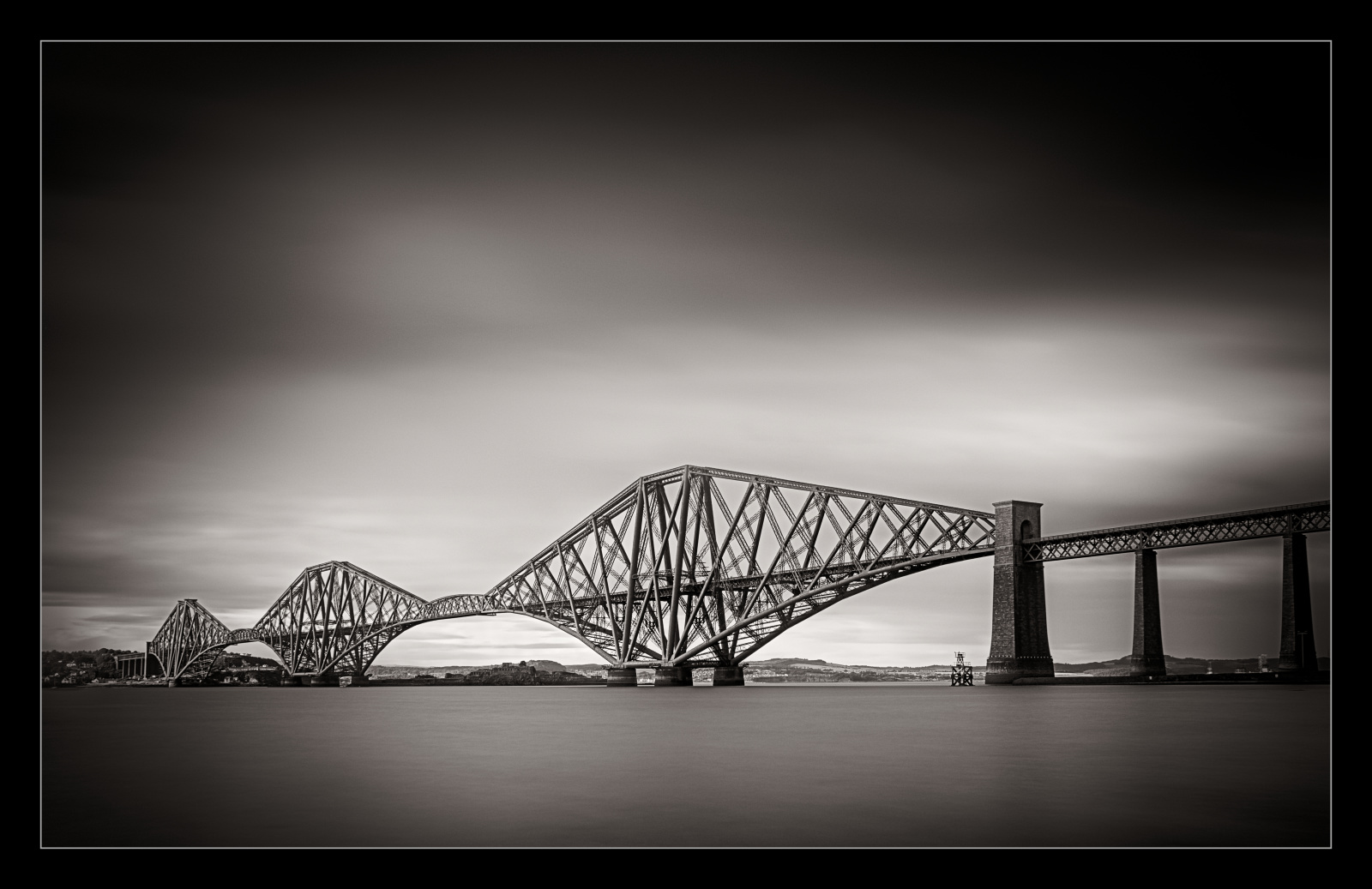
A classic shot – a long exposure black and white image of the Forth Railway Bridge from South Queensferry
Sunlight on Edinburgh
One Saturday afternoon in September, I clambered up the Radical Road in Edinburgh to my favoured viewpoint. Herewith, some photos of crepuscular rays over the city.
Arbor Low
A few photos from a trip around Derbyshire.
Arbor Low is a Neolithic henge monument in the White Peak area of the Peak District, Derbyshire, consisting of about 50 local limestone boulders now mostly recumbent in a circle surrounded by a ditch and embankment.
Oban harbour
Oban harbour, one sunny Sunday afternoon
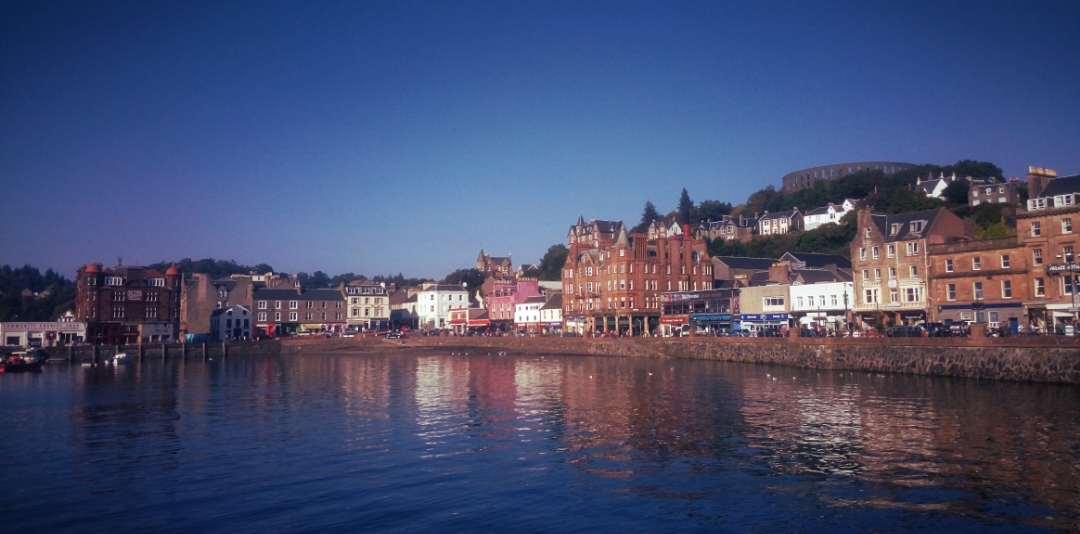
The Hermitage
A small selection of photos from The Hermitage near Dunkeld: some experiments with tree filigree – appreciating the patterns of tree branches and twigs lightly silhouetted against the sky – and the Black Linn waterfall as the River Braan flows through a gorge (some obligatory long-exposure work too, of course).
I met a gorgeous collie-x-lurcher on the way out of the carpark; the mud instantly went to trouser-pocket level and I didn’t care a jot, the merely 4-month-old wee dog was so overjoyed to see everyone.
Quite a nice place to walk in the woods of an afternoon!
Golden Hour
Sometimes, when the golden hour starts immediately after work finishes for the day, one just has to go for a drive around the middle of nowhere in Perthshire. A couple of weeks ago, I stumbled across this scene along the back-road from Forgandenny to Glenfarg and was taken by the light on the undulating lines of the landscape.
I thought it interesting to compare it both in black & white versus colour, although both are a little more strongly processed than my usual taste.
Stillness
Cauldron Falls, West Burton
One of my favoured parts of North Yorkshire’s scenery is the well-known waterfall at West Burton. Always good for a bit of classical landscape photography, exploring both context and closeup (“intimate landscape”); it’s also quite fun to compare with other people’s views of the same location, although I envy anyone who manages to get good light in such a location.
The Uses of Karst Landscape
Karst topography is a landscape formed from the dissolution of soluble rocks such as limestone, dolomite, and gypsum, characterised by underground drainage systems with sinkholes, dolines and caves and other features typical of such erosion.
A few weeks ago, Dad and I went for a drive around North Yorkshire, most particularly to the Butter Tubs – named either because they look like butter-tubs, or for the story that travellers used them to keep tubs of butter cool. They takes the form of a noteworthy (and mildly scary) pattern of crevices in the limestone about 20-25m deep, where the softer limestone rock of Hood Rigg has eroded away. The surrounding landscape affords a pleasant view where the Cliff Beck wends its way between the hills of Thwaite Common and Muker Common.
Plus the area was humourously(?) known as “Cote du Buttertubs” in the 2014 Tour de France that started in Yorkshire.
Around Dundee Law
A couple of photos from around Dundee Law:
looking south across the River Tay
The radio transmitter on top of the Law:
Looking west over Lochee, with the Menzieshill Water Tower and Camperdown Jute Mill across to Perthshire hills in the distance:
Sony NEX-7, 2-stop circular polarizer filter, HDR +/-1 EV.
Sundown on Portpatrick
A few photos from a walk around Portpatrick on a sunny evening, starting with the Royal Navy helicopter practising for Lifeboat Week, taking in some favoured old haunts and seascapes.
Video:
Colour or Black and White?
No doubt this is one of the oldest conundrums, generally long-since answered. The conventional approach is that black&white is meant to be an end in itself (a choice made at the time of shooting rather than an option or fallback in processing), in order that the eye be drawn to forms and shapes and textures, appreciated for their own sake without the distractions of realistic colour. As such, you’d expect most images to work either as black&white or as colour; it can also be somewhat annoying when one sees an image presented in more than one way as though the photographer couldn’t decide. It’s even more irksome when you are that photographer. Today I reprocessed an image taken a couple of months ago, and was struck by how it looked in the intermediate colour form before applying the intended toning.
In this case, I contend the two images both stand alone independently well, and they convey different things; further, the the colour gives a means of distinguishing the silhouetted trees from the surrounding foliage that the black&white image does not, making it look moodier.
A Change of Direction
Sometimes, one’s photography takes quite a turn.
A few years ago, I was all interested in large-format landscape work, when a fellow member of the photo-club inadvertently threw the spanner in the works by saying his particular approach gave results that represented how he felt at a given scene. Hang around: how come every LF landscapie I know feels exactly the same way then, if that way is defined by 5×4 format, tripod low on the ground, golden-hours (normally morning, strangely), portrait orientation, near-mid-far, Fuji Velvia film, grad-ND sky and rear-tilt perspective, amongst other things? Having seen that as a clique fashion rather than individual expression, I rejected it and promptly went digital, making a photo a day using overcast dull light to show the shapes of trees in the local woodland realistically.
Last Saturday marked something of a milestone: 4 years of posting a daily photo on Blipfoto. Over time, the idea of forcing a photo a day (especially one as considered and well-processed as I strived to achieve) has become artistically unhealthy and my enthusiasm for the site has waned considerably, so I called it a day.
In some ways, the future looks to be a return to landscape; certainly I intend shooting a lot more of it than I have previously, but I’m intending letting the inspiration drive matters not forcing it by the calendar. I’m hoping to post more often on this blog as well, but using the real camera as well as the mobile, so there’s been a bit of re-branding happening too…
So it was, on Sunday afternoon, with head slightly reeling from the decision, I set off with Dog for an afternoon stroll, with no idea how far or where we’d go except that I wanted it to be a long walk. And it was the longest we’ve been on since moving here, I think – left Portpatrick and walked past the golf course to Port Mora where I usually turn inland and walk through the Dunskey Glen, but this time I continued past Port Kale and the transmission huts (where cables came ashore for monitoring communication during the Troubles in Northern Ireland)…
…and with a bit of determined plodding along the Southern Upland Way, the next thing we saw was Kilantringan Lighthouse in the distance.

Kilantringan Lighthouse along the Southern Upland Way, black and white with my favoured platinum toning
It took 2.5 hours, so probably 8 miles or thereabouts, given very few photo-stops and some leisurely steep bits.
All in all, an excellent way to spend a Sunday afternoon.
